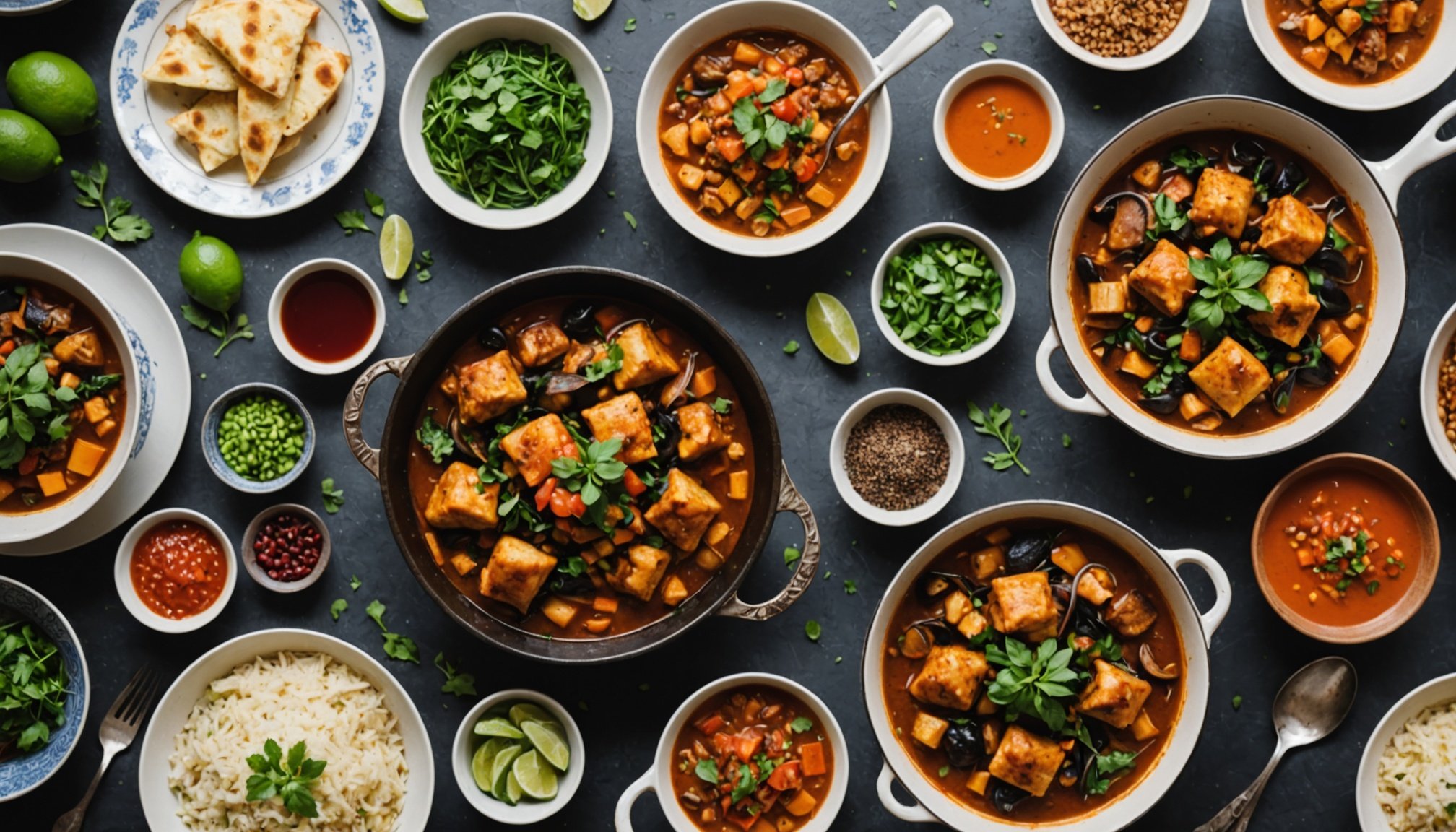In the vast and ever-changing world of cuisine, a rich tapestry of flavors awaits exploration. However, venturing into the culinary traditions of different cultures can also be intimidating. For those of us eager to diversify our food experiences, understanding how to seamlessly integrate cultural dishes into our kitchen repertoire is not just an aspiration but a delightful possibility. As we delve into this guide, crafted with chef-like precision yet aimed at the everyday cook, we aim to equip you with the knowledge and confidence to transform your cooking routine. Together, let’s embark on this flavorful journey, blending tradition with creativity, allowing the local and the exotic to meet on our plates.
Understanding the Essence of Cultural Dishes
Every culture boasts its traditional dishes, steeped in history and infused with meaning. To integrate these into your repertoire, it’s crucial to understand the heart of the matter — the ‘why’ and ‘how’ behind each dish. Cultural foods are more than just recipes; they are narratives of a people’s traditions, shaped by geography, climate, and cultural evolution.
Additional reading : How can I incorporate more plant-based meals into my cooking routine?
Take, for example, the humble Italian pasta. While it varies significantly from region to region, each iteration reflects local ingredients and age-old techniques. Understanding these nuances is key to recreating an authentic experience in your kitchen.
Moreover, food is a language. When you prepare a cultural dish, you are partaking in a dialogue that transcends borders. This dialogue requires respect and a willingness to learn. Begin by researching the origins of a dish, its significance in its native cuisine, and the rituals that accompany its preparation and consumption. Dive into the world of spices that are often the backbone of these dishes, as they carry the soul of the flavor profile.
Have you seen this : What are the considerations for integrating a dining area into a small kitchen?
Embrace the stories told through cuisine and develop a connection. As you do, you will find that your culinary creations resonate with authenticity and genuine respect for the culinary traditions they represent.
Where to Start: Choosing the Right Recipes
Embarking on the path to incorporate cultural dishes into your repertoire begins with selecting the right recipes. This choice sets the tone for your culinary adventure and determines the ease or complexity of your cooking endeavors. It’s all about finding a balance between the unfamiliar and the achievable.
Begin with dishes that share similarities with what you already know. If you’re accustomed to using ingredients like garlic or tomatoes, exploring Mediterranean cuisine might be a smoother transition. Start with a dish like Spanish paella or Greek moussaka, both of which offer a rich tapestry of flavors while still being approachable.
Another route is to look into local cultural influences that might already be present in your area. Many cities boast a vibrant cultural mosaic, complete with family-owned restaurants whose recipes have been passed down for generations. These can serve as excellent sources of inspiration and learning.
It’s also beneficial to engage with community events or cooking classes that focus on specific cultural foods. Here, you can witness firsthand the techniques and nuances of preparing traditional recipes. Such experiences can enhance your understanding and appreciation, allowing you to return to your kitchen armed with knowledge and a newfound enthusiasm.
Ultimately, let curiosity be your guide. Each new recipe is an invitation to step into a new world, offering a fresh perspective and enriching your culinary journey.
Techniques to Master for Authentic Flavors
While ingredients often hold center stage in culinary creations, the techniques used in preparation are equally crucial for achieving authentic flavors. Mastering these techniques can transform your cooking and bridge the gap between mere replication and true culinary artistry.
Begin with the basics — chopping, slicing, and other prep work. Many cuisines have specific methods that, when followed, enhance the texture and flavor of the dish. For instance, the thin slicing of vegetables in Asian cooking promotes even cooking and flavors that meld seamlessly.
Next, consider the cooking methods themselves. From the slow simmering of soups and stews in traditional French cuisine to the quick stir-frying in Chinese dishes, each method imparts a distinct flavor and texture. Understanding the ‘why’ behind these methods can elevate your culinary prowess.
Additionally, don’t shy away from techniques like fermentation or marination, which are integral to many cultural dishes. These processes often require patience and time, allowing flavors to deepen and develop complexity. The fermented tang of kimchi or the rich depth of marinated meats can transform a meal into an extraordinary experience.
Lastly, remember that practice makes perfect. As you explore these techniques in your kitchen, be prepared for trial and error. Each attempt refines your skills and builds your confidence, enabling you to recreate authentic flavors with ease and precision.
Embracing the Cultural Significance of Foods
Food is not just about taste; it’s about connection, tradition, and identity. When you incorporate cultural dishes into your cooking, you are embracing more than just new flavors—you are engaging with history and culture, creating a bridge that connects people across continents.
Understanding the significance of foods in different cultures can transform your culinary journey. Certain dishes, like Japan’s sushi or Mexico’s tamales, are steeped in tradition and hold ceremonial importance. By appreciating their cultural context, you can approach these recipes with greater understanding and respect.
Moreover, foods often serve as a time capsule, offering a glimpse into a culture’s past. The use of certain ingredients can reflect historical trade routes, climatic conditions, and even socio-economic factors. This is evident in the spice-laden curries of India, where each dish tells a story of exploration and trade.
As you weave these cultural threads into your culinary repertoire, take time to reflect on the narratives behind the dishes. Share these stories with your family and friends, turning meals into educational experiences that foster appreciation and empathy.
In essence, by embracing the cultural significance of foods, you enrich your own life and broaden your perspective. The act of cooking becomes a celebration of diversity, linking you to the world’s kitchens and offering a taste of the global tapestry of cuisine.
Incorporating cultural dishes into your kitchen repertoire is not just about expanding your palate but about embarking on an enriching journey of culinary discovery. It’s a chance to explore the world through flavors, traditions, and stories, bringing a piece of the global kitchen into your home.
As we’ve navigated through understanding, choosing, mastering, and embracing the cultural essence of foods, we hope to have equipped you with the tools needed to transform your meal preparations into a global adventure. The journey of learning and exploration is endless, with each recipe offering a new chapter.
So, let curiosity guide your spoon, and may the world of cuisine unfold before you, one delicious dish at a time. Whether you’re a seasoned cook or a beginner, the world of traditional recipes awaits, ready to be explored and celebrated in your kitchen.











